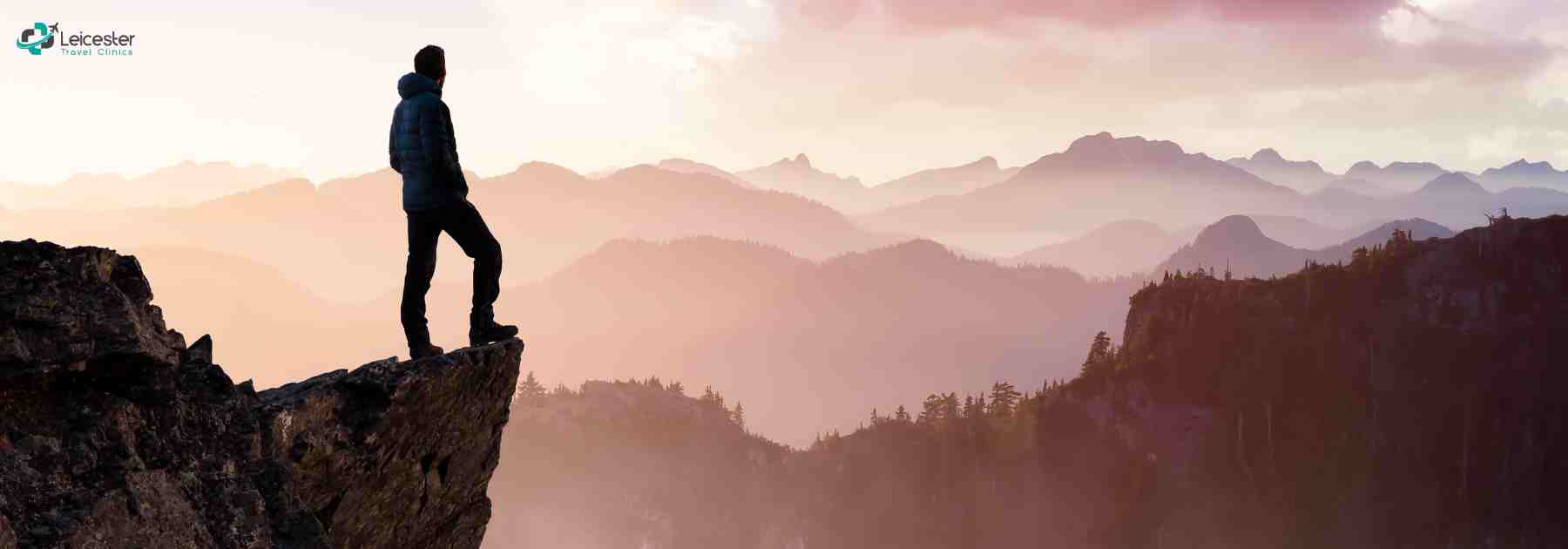- Call : 01162668557
- admin@bmphealthcare.com
- 118 Belgrave Road, Leicester, LE4 5AT
Altitude Sickness: Causes, Symptoms, and Prevention
Understanding altitude sickness is essential for anyone planning to explore elevated terrains. This comprehensive guide will delve into the basics, causes, symptoms, prevention strategies, and more to help you prepare for high-altitude adventures.
Understanding Altitude Sickness
Altitude sickness, also known as acute mountain sickness (AMS), occurs when your body struggles to adapt to the lower oxygen levels found at high altitudes. There are three common types of altitude sickness:
- Acute Mountain Sickness (AMS): The mildest form, presenting with symptoms like headache, nausea, and fatigue.
- High-Altitude Cerebral Edema (HACE): A severe form causing swelling of the brain, leading to symptoms such as confusion, difficulty walking, and severe headaches.
- High-Altitude Pulmonary Edema (HAPE): A critical condition where fluid accumulates in the lungs, causing shortness of breath, chest tightness, and a dry cough.
At high altitudes, the air pressure decreases, resulting in less oxygen available for the body. This shortage can lead to various physiological challenges as the body tries to compensate for the reduced oxygen levels.
Causes of Altitude Sickness
The primary cause of altitude sickness is the reduced oxygen levels found at higher elevations. As you ascend, the atmospheric pressure drops and each breath contains fewer oxygen molecules. The body responds by increasing breathing and heart rates. The heart pumps more blood to supply sufficient oxygen to tissues, which can cause increased blood pressure and other circulatory adjustments resulting in a strained system.
Recognising the Symptoms of Altitude Sickness
Mild AMS typically manifests within hours of ascending and includes:
- Headache
- Nausea
- Dizziness
- Fatigue
- Insomnia
Severe symptoms associated with HACE and HAPE include:
- HACE: Severe headaches, confusion, loss of coordination, and hallucinations.
- HAPE: Severe shortness of breath, chest tightness, a dry cough that may progress to a productive cough with frothy sputum, and cyanosis (bluish skin due to lack of oxygen).

Risk Factors
Several factors can increase the likelihood of developing altitude sickness:
- Rapid Ascent: Climbing too quickly without allowing time to acclimate.
- Physical Exertion: Overexerting yourself before acclimatising.
- Previous History: A prior episode of altitude sickness increases risk.
Other contributing factors include age, overall fitness level, and pre-existing medical conditions such as respiratory or cardiovascular issues.
Prevention Strategies
Preventing altitude sickness involves careful planning and preparation:
- Gradual Ascent: Ascend slowly and allow time for your body to adjust. A general guideline is not to increase your sleeping altitude by more than 300-500 meters per day above 2,500 meters.
- Acclimatisation Days: Incorporate rest days into your itinerary to acclimate.
- Hydration and Nutrition: Stay well-hydrated and maintain a balanced diet.
- Avoid Alcohol and Sedatives: These can exacerbate symptoms and interfere with acclimatisation.
- Altitude Sickness Medication: Certain medications, such as acetazolamide (Diamox), can help prevent and reduce the severity of symptoms by accelerating acclimatisation. Consult with our pharmacists to find out more about using altitude sickness medication.
Coping with Altitude Sickness
If symptoms of altitude sickness appear, it’s crucial to take immediate action:
- Descend: Move to a lower altitude as soon as possible.
- Rest: Avoid physical exertion and allow your body to recover.
- Seek Medical Help: In severe cases, seek medical attention immediately.
Debunking Common Misconceptions
- Myth: Only the unfit get altitude sickness. Fact: Altitude sickness can affect anyone, regardless of fitness level.
- Myth: Drinking alcohol helps with altitude sickness. Fact: Alcohol can worsen symptoms and should be avoided.
High-Altitude Destinations and Their Challenges
Each high-altitude destination poses unique challenges:
- Himalayas: Extremely high elevations with harsh weather conditions.
- Andes: High winds and lower oxygen levels.
- Rockies: Variable weather and rapid elevation changes.
- Kilimanjaro: Rapid ascent routes increase risk.

Preparing for High-Altitude Hikes
- Physical Training: Build endurance and strength with regular exercise.
- Gear Selection: Invest in high-quality gear suited for high-altitude conditions.
- Itinerary Planning: Include acclimatisation days and have a flexible schedule.
Altitude Sickness in Athletes
Athletes, particularly those in endurance sports, can be significantly affected by altitude sickness. Training at high altitudes can enhance performance through improved oxygen efficiency, but it requires careful acclimatisation and monitoring.
Strategies for Athletes:
- Gradual Acclimatisation: Spend time at intermediate altitudes before high-altitude events.
- Altitude Tents: Simulate high-altitude conditions during training.
- Altitude Sickness Medication: Use under medical supervision to aid acclimatisation.
Get Altitude Sickness Medication in Leicester
By understanding altitude sickness and taking the appropriate altitude sickness medication, you can safely enjoy the beauty and adventure of high-altitude environments. Book a consultation with one of our pharmacists before your journey, especially when considering altitude sickness medication, to ensure a safe and enjoyable experience.
This blog was written on behalf of Leicester Travel Clinics by Pharmacy Mentor.